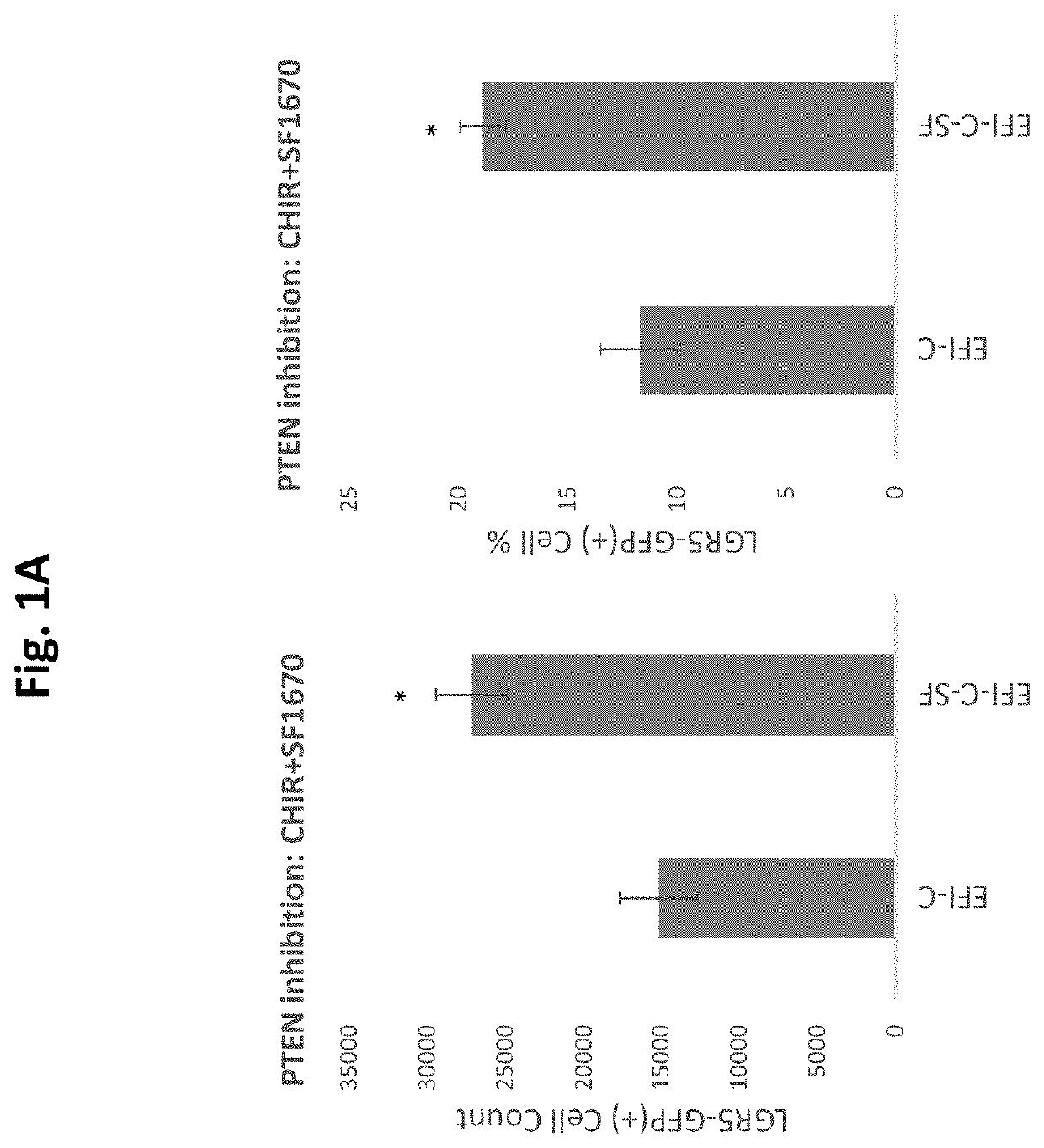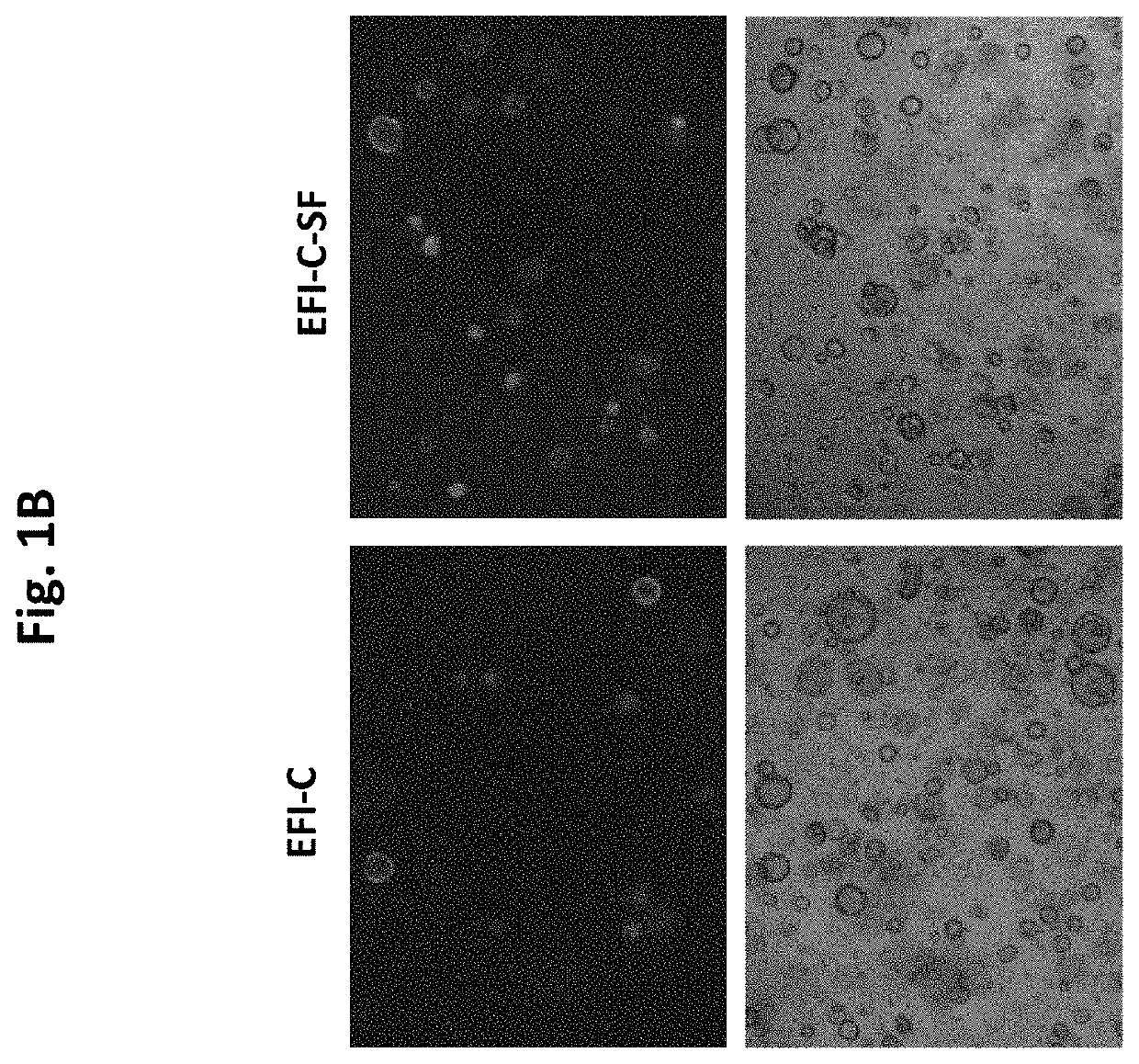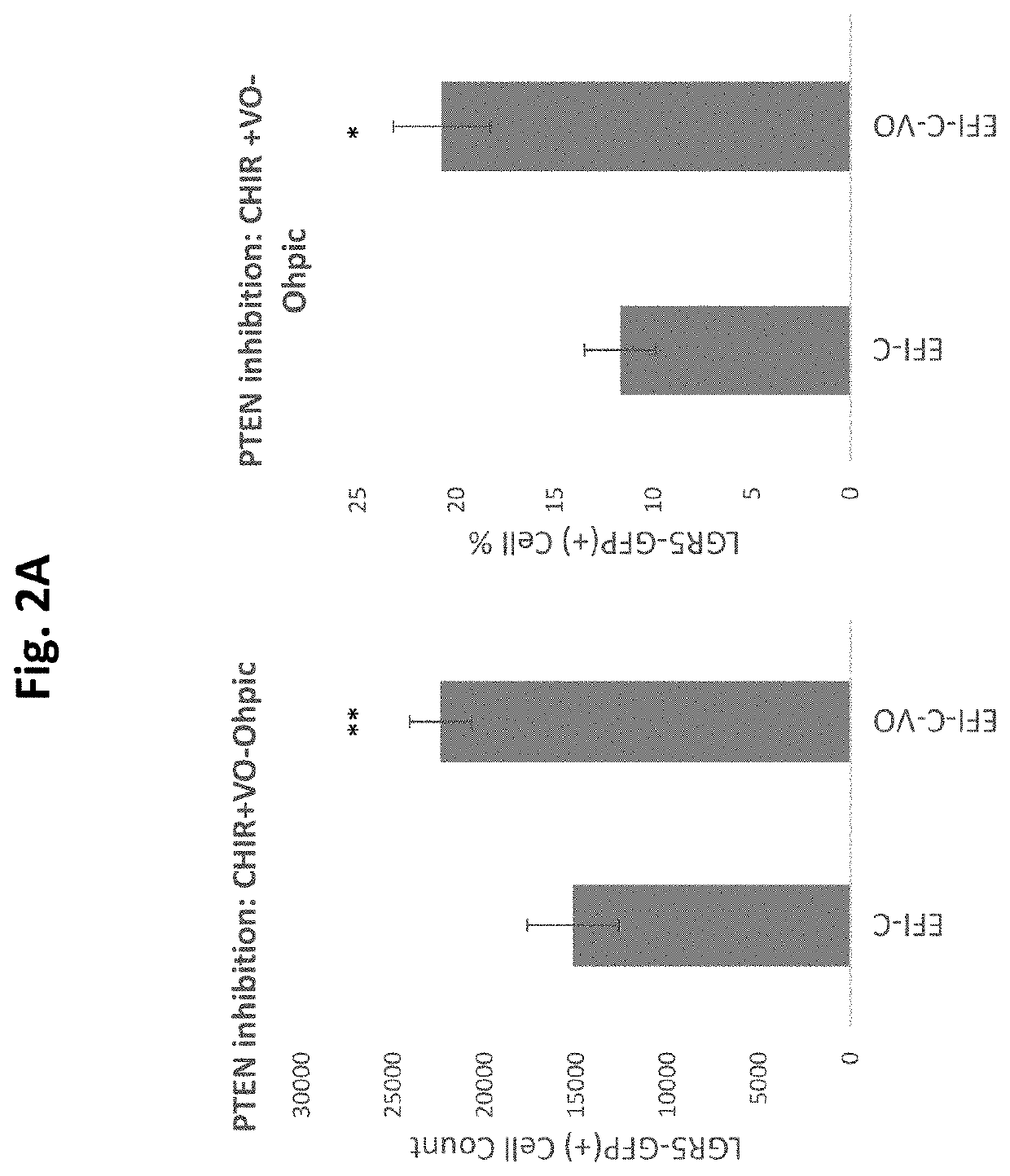Compositions and methods for generating hair cells by upregulating pi3k
a technology of hair cells and compositions, applied in the field of compositions and methods for generating hair cells by upregulating pi3k, can solve the problems of no therapeutic option to restore function, hair cells are susceptible to damage, and mammals lack this regenerative ability, so as to increase the proliferation of cochlear supporting cells or vestibular supporting cells, the effect of increasing the proliferation of cochlear supporting cells
- Summary
- Abstract
- Description
- Claims
- Application Information
AI Technical Summary
Benefits of technology
Problems solved by technology
Method used
Image
Examples
example 1
and Methods
[0662]Mice for Cell Screening
[0663]Neonatal Lgr5-EGFP-IRES-Cre-ER mice (The Jackson Laboratory, strain 8875) were used to analyze the effects of small molecules on cochlear stem cell expansion (see Barker et al., Nature 449, 1003-7 (2007). This strain allowed for visualization and quantification of EGFP cells.
[0664]Cell Assays
[0665]All animal studies were conducted under an approved institutional protocol per National Institutes of Health guidelines. Using neonatal animals, cochleae were dissected and the organ of Corti (sensory epithelium) was separated from the stria vascularis (ion transport epithelium) and the modiolus (nerve tissue). Epithelia were then collected and treated with TrypLE for 15-20 minutes to obtain single cells. The cells were then filtered (40 mm) and suspended in a Matrigel (Corning) dome for 3D culture seeded at 0.5 cochlea per well.
[0666]Expansion of Lgr5 Cells: Cells were cultured in a 3D system and bathed in a serum free 1:1 mixture of DMEM and ...
example 2
bition Enhances Expansion of Cochlear Progenitor Cells
[0677]GSK3 inhibition with CHIR, elicits the expansion and enrichment of cochlear Lgr5 progenitor cells in culture. As shown in FIGS. 1 A &B the expansion and enrichment of cochlear Lgr5 progenitor cells in culture is further enhanced by addition of the PTEN inhibitor / PI3K agonist SF1670 at 0.1 uM. Similarly, as shown in FIGS. 3 A & B CHIR induced cochlear Lgr5 progenitor cells expansion also enhanced is enhanced by addition of the PTEN inhibitor / PI3K synergist VO-Ohpic (VO) at 3 uM.
example 3
cement of Cochlear Progenitor Cell Expansion and Jag1 Upregulation by PTEN Inhibition is Independent of HDAC Inhibition
[0678]As shown in FIG. 3, PTEN inhibition with VO-Ohpic does not elicit a detectable increase in HDAC inhibition. In contrast, HDAC inhibitor, VPA elicits a concentration dependent increase in HDAC inhibition with and without GSK3 inhibition. Together, these data suggest that enhancement of cochlear cell proliferation and upregulation of Jag1 can be achieved without HDAC inhibition.
PUM
| Property | Measurement | Unit |
|---|---|---|
| temperature | aaaaa | aaaaa |
| temperature | aaaaa | aaaaa |
| temperature | aaaaa | aaaaa |
Abstract
Description
Claims
Application Information
 Login to View More
Login to View More - R&D
- Intellectual Property
- Life Sciences
- Materials
- Tech Scout
- Unparalleled Data Quality
- Higher Quality Content
- 60% Fewer Hallucinations
Browse by: Latest US Patents, China's latest patents, Technical Efficacy Thesaurus, Application Domain, Technology Topic, Popular Technical Reports.
© 2025 PatSnap. All rights reserved.Legal|Privacy policy|Modern Slavery Act Transparency Statement|Sitemap|About US| Contact US: help@patsnap.com



